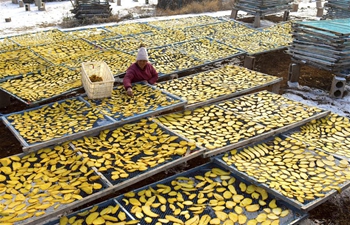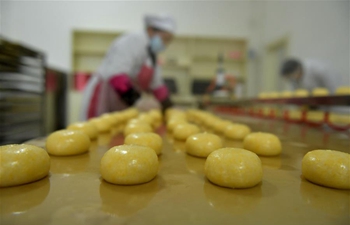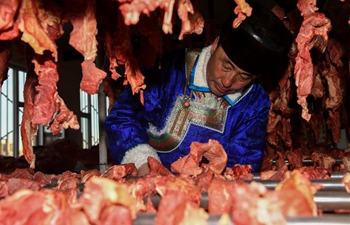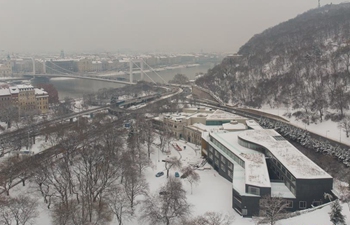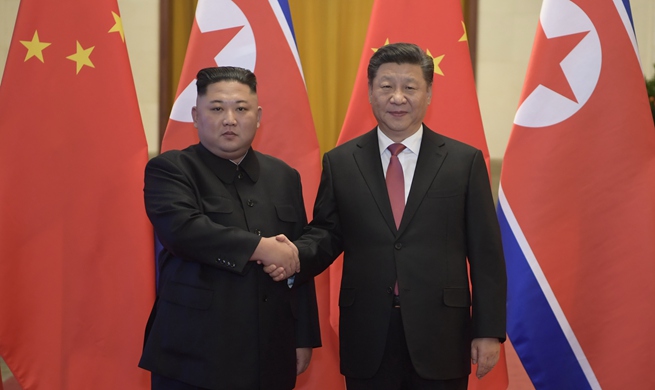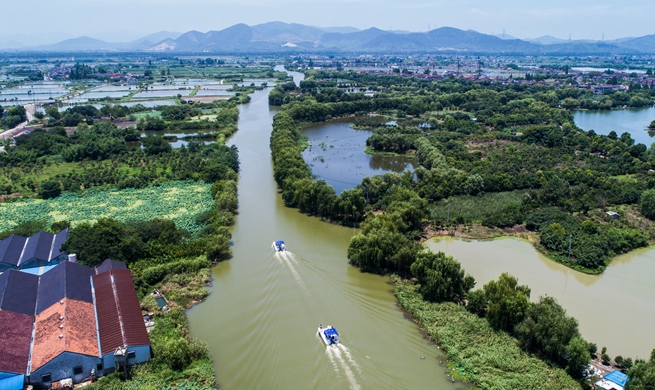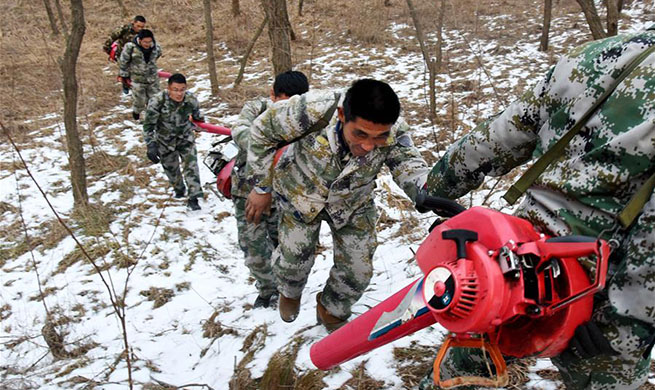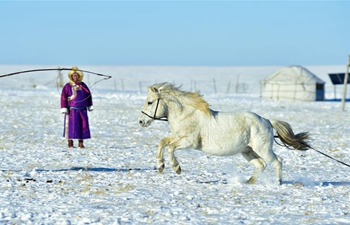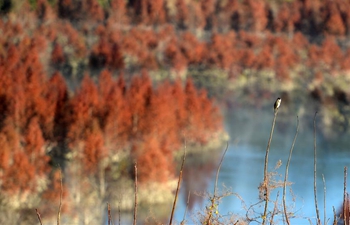LHASA, Jan. 10 (Xinhua) -- Qizhala, chairman of the government of Tibet Autonomous Region, delivered a government work report at the annual session of the 11th People's Congress of this autonomous region on Thursday.
He reviewed the progress made in 2018 and outlined government work for 2019. Here are some facts and figures from the report:
-- Tibet's GDP is expected to grow by 10 percent and top 140 billion yuan (21 billion U.S. dollars) in 2018. Major industries in the region include agriculture, tourism and culture, green industry, modern services, and high-tech and digital industry.
-- Average per-capita disposable income in rural areas is expected to increase by about 13 percent, and that for urban dwellers by 10 percent in 2018.
-- The region created 54,000 new jobs for urban residents in 2018 and its urban unemployment rate stood at 2.83 percent.
-- A total of 180,000 people in Tibet were taken off the list of impoverished, defined as per capita annual income of 2,300 yuan (about 335 U.S. dollars) at 2010 prices.
-- About 14.49 billion yuan (about 2.1 billion U.S. dollars) was spent to fund the resettlement of 218,000 people from less inhabitable areas.
-- Tibet launched more than 700 poverty alleviation projects, trained 36,000 poverty-striken farmers and herdsmen, and provided 47,000 new jobs in ecological protection.
-- Tibet received 33.68 million tourists, up 31.5 percent. Tourist revenue reached 49 billion yuan (about 7 billion dollars), up 29.2 percent.
-- The installed capacity of Tibet's clean energy is expected to reach 3.33 million kilowatts. The region sends 870 million kilowatt-hours of electricity to 14 provinces and regions in China.
-- Border trade volume in 2018 was 4.8 billion yuan (about 700 million dollars).
-- A total of 10.7 billion yuan (1.5 billion dollars) was spent on environment efforts. New trees were planted on 74,000 hectares of land. Forests cover 12.14 percent of land in Tibet.
-- Around 33 percent of the people live in urban areas in Tibet.
-- Tibet targets 10-pct economic growth in 2019. About 50,000 new jobs will be created in cities and towns this year.




